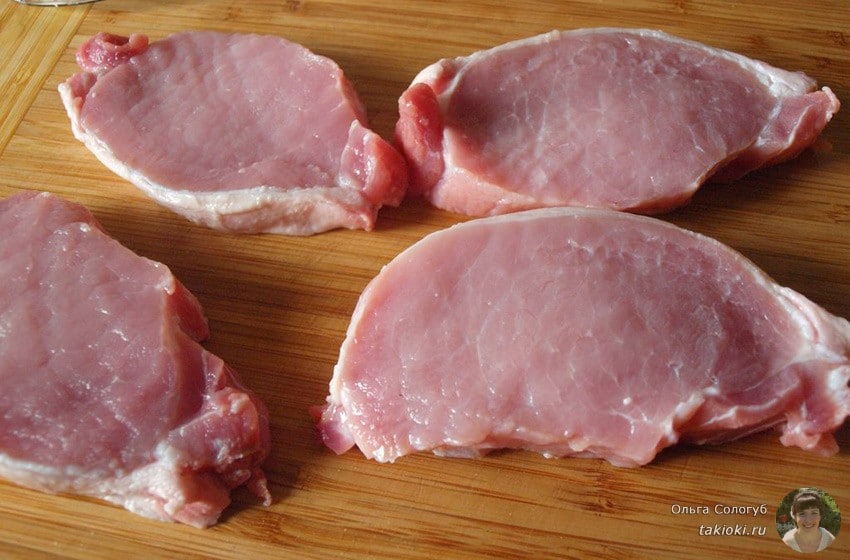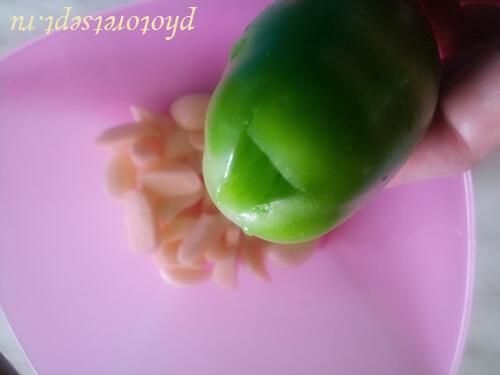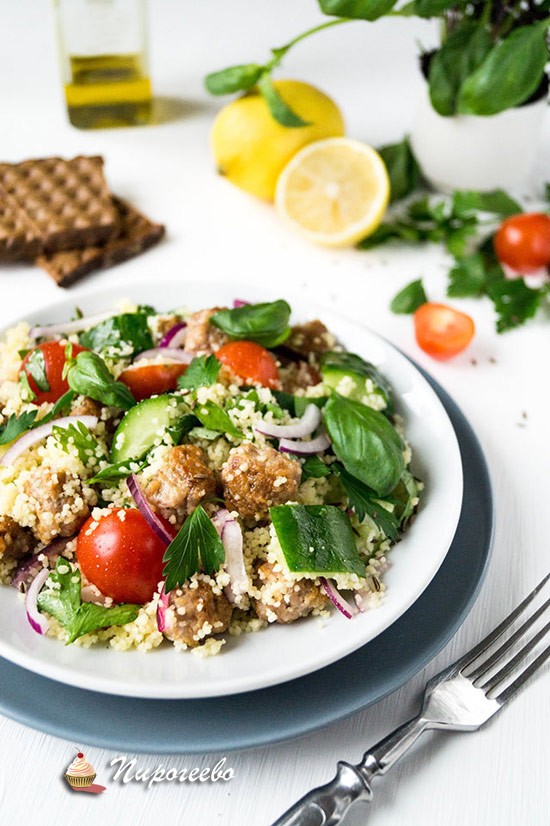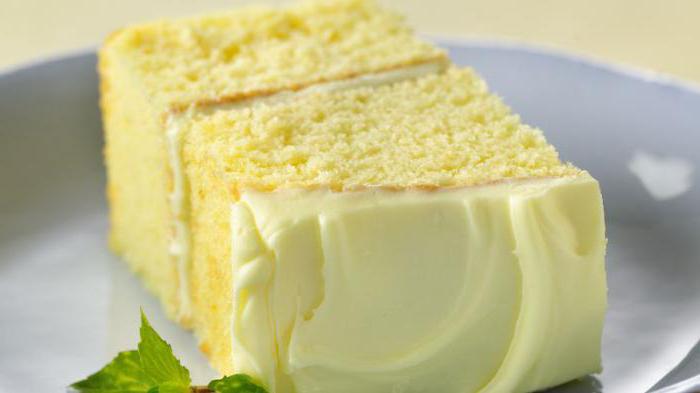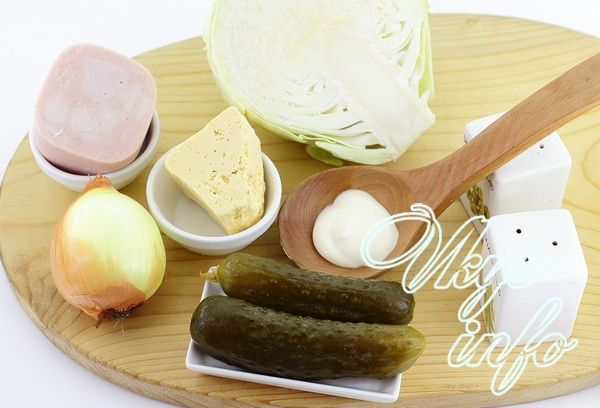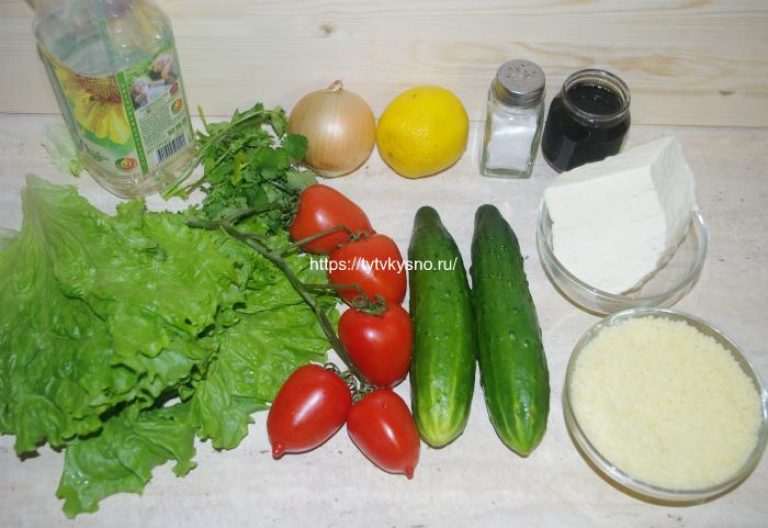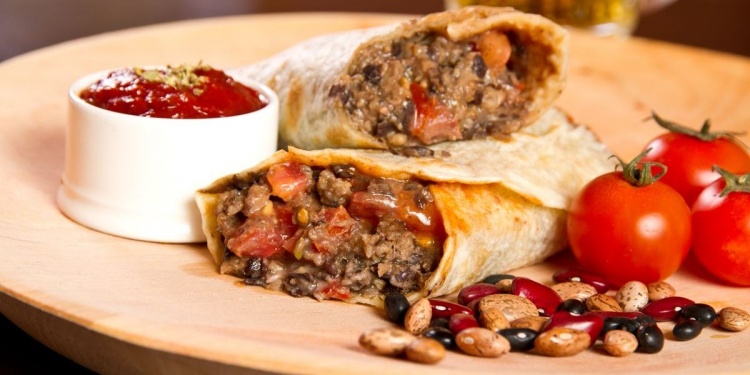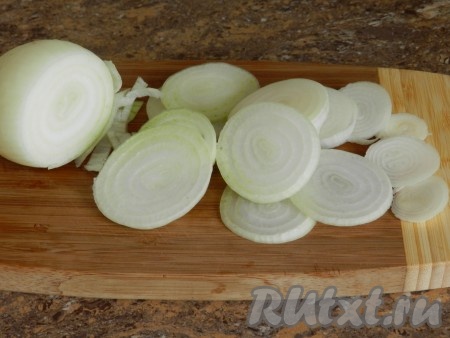Cheddar cheese characteristic. Cheddar cheese is recognized as the most useful
Cheddar is cow's milk cheese, one of England’s most famous and oldest products. The history of the appearance of this cheese dates back to the time of the Roman Empire. It was the Romans who taught the British how to make hard cheese.
In the Middle Ages, Cheddar got its name from a place of the same name in the county of Somerset, where it was cooked from milk from cows grazed on the pastures of the Mendip hills.
Today, real classic Cheddar cheese is made only in England in the counties of Slmerset, Devon, Cornwall and Dorset.
In the homeland of Cheddar, cheese is produced in large heads, reaching a mass of 54 kg. The cheese ripens within 2 years. Cheddar cheese from the milk of cows grazing in the lush green pastures of Misty Albion, acquires a rich taste and excellent nutty flavor. The fat content of this cheese reaches 48%.
Stages of Cheddar Cheese Production:
- Leaven. Enzymes are added to the heated fresh milk, thanks to which it sour and curd. Milk is converted to cottage cheese and whey. The resulting mass is dumped in a specialized tub.
- Cheddarization. In the process of production of Cheddar cheese, a special additional procedure is carried out, the so-called cheddarization, the essence of which is the separation of cottage cheese from whey, which leads to the formation of a dry plastic curd mass. The resulting mass is cut into blocks, which are turned over until the complete removal of the serum residue.
- Slicing and filling in forms. After cheddarization, the cheese mass is crushed and salted, and then placed in special forms in the form of cylinders, designed for 27-54 kg.
- Pressing and wrapping. Cheese heads are placed under the press. After a few days, they are swept in with hot water and wrapped in cloth. So cheese “breathes” without losing its shape.
- Aging. Cheddar is kept in temperature-controlled rooms for subsequent aging. Here it is constantly turned over, and also periodically tasted to achieve the desired taste. Cheddar is usually aged 2, but sometimes as long as 3 years!
The taste of cheese
Cheddar's taste is compared to chocolate! It has a fresh nutty aroma and a firm elastic texture. Cheddar traditionally has a rich sweet taste with a slight acidity. Cheddar color depends on the aging time and can be white, yellow or orange.
Young Cheddar, which was aged no more than six months, has a soft texture and delicate taste. After a year of aging, the consistency hardens, the taste acquires intensity. The 1.5-year-old Cheddar is drier with a piquant taste, and calcium crystals can be seen in the structure.

Varieties of cheddar
- Cheddar Deny. It is produced in Dorset from the milk of local cows only. It fully ripens on Dorset farms and is known as one of the most titled cheeses of England since 1959.
- Cheddar Green. It is produced in the county of Somerset on the Green family cheese factory, which has been manufacturing this cheese for four generations, performing many stages of manual production without mechanizing the process.
- Cheddar kin - also cheese from the county of Somerset, produced at the Kin family cheese factory, according to a special recipe exclusively by hand. During ripening, Cheddar Keen cheese wrapped in cloth is poured with melted lard.
- Cheddar montgomery Somerset County is produced according to a recipe developed over 70 years ago. In the manufacture of Cheddar Montgomery, a natural enzyme from the stomach of calves is added to the cheese mass, which is a source of enzyme that provides good milk coagulability.
- Cheddar Quicks. Produced in Devon. It is an aromatic cheese with an oily texture. Cheddar Westcombe from Somerset County is a traditional cheese with a long aging and bright spicy taste.
How to eat cheddar
Cheddar is an integral part of English cuisine. Cheddar is used for cooking traditional English breakfasts and lunches - omelettes, sandwiches. From Cheddar prepare a great sauce for dressing hot dishes. One of the most popular snacks from Cheddar in England is called the Welsh rabbit - these are cheese croutons.
Cheddar served with red wine with a fruity bouquet, such as Merlot. Long-term cheddar blends perfectly with vintage port.
In our country, they make up the majority of the cheese produced. By size and weight they are divided into large and small. According to the production technology and characteristic taste and smell - for the following types: cheeses such as Swiss, Dutch type, Cheddar type, Russian type, Latvian type.
CHEESE TYPE SWISS. To produce these cheeses, high quality milk is used in terms of organoleptic properties, bacterial contamination and acidity.
SWISS CHEESE matures 6 months or more. In appearance it is a large low cylinder weighing 50-100 kg. On a strong and wrinkle-free crust, the imprints of the fabric are the sickle, which the cheese was pressed into. Durable dry coating of grayish-white color is allowed, the taste is sweetish, pleasant, with a well-defined taste and aroma. Eyes round or oval, fat content 50%.
SOVIET CHEESE obtained from pasteurized milk. It has the shape of a rectangular bar with slightly cut vertical edges and convex side surfaces. Weight - up to 16 kg. The ripening period is 4 months, but the best palatability when ripening is 6-8 months. To taste close to Swiss. Fat content of 50%.
MOSCOW CHEESE - a variety of Soviet, differs in shape - a high cylinder weighing 6-8 kg. The taste is sweet-sour, fat content - 50%.
CARPATHIAN CHEESE has the shape of a low cylinder. Weight up to 15 kg. Matures within 2 months. The taste is sweet sour.
KUBAN CHEESE represents unified cylindrical cheeses. It is close to Soviet in taste, aroma and consistency. Weight - up to 10 kg.
CHEESE TYPE DUTCH. Cheeses of this type represent a wide range of pressed cheeses with a low temperature of the second heating.
DUTCH CHEESE. When using the low temperature of the second heating, more whey remains in the cheese mass. This contributes to a more rapid development of lactic streptococci and faster maturation of cheese (up to 3 months). As a result, small eyes are formed of a round, slightly flattened shape. The consistency of the cheese is elastic, softer than that of Swiss cheese. In shape, the cheese is produced round, weighing 2-2.5 kg, midget 0.4-0.5 kg; large squared 5-6 kg and small squared 1.5-2.0 kg. Mature cheese is considered to be ripening, 2-2.5 months, midget - 35 days. When ripening up to 6-8 months, its taste becomes more acute and pronounced. A sign of good quality is the appearance of a tear in the cheese. Dutch cheese is distinguished by fat content: squared - 45%, round - 50%. The taste and aroma are clean, with the presence of pungency and sourness, without extraneous smacks and smells.
Kostroma cheese has the shape of a low cylinder with a convex lateral surface and rounded faces, weighing 9-12 kg (large) and 5-6 kg - small. According to technology and organoleptic indicators, it is close to Dutch, it matures in 2.5 months.
YAROSLAVSKY CHEESE is produced in the form of a high cylinder weighing 2-3 kg, a unified large cylinder weighing 8-10 kg and a unified small cylinder weighing 4-6 kg. According to physicochemical and organoleptic indicators, it approaches the Dutch squared. Fat content is 45-50%.
STEPPE cheese is produced in the form of a bar with a square base, weighing 5-6 kg. The taste is sharp, the dough is slightly brittle. Fat content -45%. The surface of the bar is waxed.
UGLICH CHEESE has the shape of a rectangular bar weighing 2-3 kg. The cheese dough is tender, elastic, slightly brittle with round oval or irregularly shaped eyes. The taste is slightly sour. The cheese ripens within 2 months. The fat content is 45%.
POSHEKHONSKY CHEESE has the form of a low cylinder weighing 5-6 kg The eyes are round or slightly flattened. The fat content is 45%. The maturation is 1.5 months.
ESTONIAN CHEESE. It features accelerated ripening. It can be produced with a maturity of 30 days. It has the shape of a tall cylinder, weighing 2-3 kg. The taste is slightly sour, spicy aftertaste is allowed. The dough is tender, plastic. The eyes are round, slightly oval, evenly spaced. The fat content is 45%.
Dniester cheese - quickly ripening. It has the shape of a bar. The dough is tender, slightly smeared. Fat content 50%. ,
LITHUANIAN CHEESE. The shape of a rectangular bar, weight 5-6 kg. The taste is tender sour. The fat content is 30%.
CHEESE TYPE CHEDDER
A characteristic feature of the production of cheeses in this group is that before molding the cheese mass is subjected to cheddarization (fermentation). As a result, the development of lactic acid fermentation is intensified and lactic acid is accumulated, which, acting on the protein, makes the mass soft, viscous, and delaminates into thin, sheet-like layers. In this case, gas formation occurs, as a result of which irregularly shaped eyes are formed. At the end of ripening, the formation of gas fades before molding and the eyes flatten.
Cheddar has the shape of a tall cylinder with a steep side surface and flat bases. Its weight is 30-33 kg. The maturity of cheese is reached at the age of three months. The cheese has a soft shell tightly pressed to the dough. The surface of the cheese is waxed. The taste and smell are slightly sour. The dough is plastic, tender, slightly smeared. No eyes, fat content of at least 50%. A variation of Cheddar cheese is Altai Mountain cheese.
CHEESES TYPE RUSSIAN
It is made without chedcerization, but the cheese grain is kept at a temperature of 41-42 ° C for 4-50 minutes after a second heating, while the acidity increases. Russian cheese is usually salted in grain, followed by salting of the head in brine. Sometimes they use full salting in grain, without applying salting in brine. Cheese has the form of a low cylinder weighing 11-13 kg (large) and 7-9 kg (small). The taste and smell are slightly sour, pronounced; the dough is tender, plastic; irregular slit-like eyes. The cheese has an even thin crust, the surface is coated with paraffin. Ripening period is 70 days. The fat content is 50%.
CHEESE TYPE LATVIAN - These are semi-hard self-pressed cheeses with a low temperature of the second heating. In the ripening of cheese involved lactic acid and mucus-forming bacteria that develop on the surface. Cheese ripening goes from the surface to the center. Cheeses are characterized by sharp specific slightly ammonia taste and smell and high moisture content. Latvian cheese has the shape of a bar with a square base and convex side surfaces, weighing 2.2-2.5 kg. The crust is thin, covered with slightly sticky thin mucus of red-brown color with light spots. The dough is plastic. Eyes oval irregular shape. The fat content is 45%.
SPICY CHEESE has the shape of a rectangular bar weighing 2-4 kg. The consistency is more tender, since it has a fat content of at least 55%. Ripens 35-45 days.
A popular variety of English cheddar cheese made from raw or pasteurized milk. The cottage cheese is separated from the whey by special rennet, and then mixed with salt, cut into cubes and left to ripen for 15 months. The ideal environment for this is the temperature of the cave, therefore, like all other species, the cheddar is also stored there (Cheddar Gorge and Wookiee Hole Cave).
The main regions of production - its history began in the Cheddar region of Somerset, and later it began to be produced in other regions of the country and in several other countries of the world. But only four counties in southwestern England have the right to use the name West Country Farmhouse Chedda. Cheddar takes second place in popularity among cheeses (mozzarella in the first)
History: where did cheddar cheese come from
Cheese has been known since the 12th century, then for the first time in the royal records appears cheddar, which was bought for one farthing (10 thousand 240 pounds were purchased). There is a version that the recipe was brought from Cantal (region of France) by the Romans. But there is still no unequivocal opinion on where cheddar cheese came from.
In the gorge on the edge of the village of Cheddar there were beautiful caves that helped the cheese to ripen normally - there was a constant temperature and ideal humidity. And already in the 17th century, Charles the First buys a product in this yet little-known village.
In the 19th century, the cheese production system was modernized - this was done thanks to the milkman Joseph Harding, who produced cheese on new scientific requirements and used all the latest scientific technical developments of that time. So the story of cheddar cheese began.
Cheddar Key Features
Cheddar cheese has a pale yellow or ivory color, and with the addition it can have other shades. It is distinguished from others by a sharp, sour or nutty flavor. Consistency is plastic. Cheese heads are made in the form of a cylinder, and on top are covered with an oily film. Some manufacturers still cover the finished product with black wax in order to protect it from contamination, but most use the usual rag cloth, which copes with this no worse.

The most famous species are Quickes, Kina, and Montgomery. The main characteristics of cheddar cheese allow it to be widely used in cooking for the preparation of main dishes and desserts.
- Calories - 392.0
- Squirrels - 23.0
- Fats - 32.0
- Carbohydrates - 0.0
Useful properties of cheddar cheese
Cheddar cheese contains many useful vitamins of groups A and B, trace elements (copper, zinc, iron, magnesium, potassium, etc.) and amino acids.
It is advised to eat it to stimulate brain activity - it will be useful for the student before a difficult exam, or for adults during various reports, when a fresh head is needed more than ever. The beneficial properties of cheddar cheese are not limited to this.
Please note that half of the product is milk fat. This means that it is not recommended for use by dieters.
Cooking Examples
In Canada, they use it to make cheese soup, which is a hallmark of one of the theme parks at Walt Disney World.
It goes well with dishes that include bananas or mustard. Use it as an additive to salads, scrambled eggs, hamburgers, biscuit and the like.
Cheddar will be an excellent base for cheese sauce for fish, meat and side dishes with potatoes.
Combine it with wine, cider, port or beer.
Products in the world - do not count. But one of the finest is cheese. Homer also admired him. He was praised by the Egyptian pharaohs. Not a single breakfast of the nobles could do without this product. A huge number of varieties of cheese are known. This article will talk about Cheddar.

What it is?
Cheddar is a traditional solid English delicacy. Some experts attribute it to semi-solid grades. It is made from whole cow's milk, and pasteurized is also used. The texture of the cheese is rather dense, not having holes characteristic of cheese. Cheddar's cut-off plates bend and crumble well. Pulp - creamy color with a yellowish color, sometimes the color of a pumpkin. Cheese acquires such a shade thanks to the natural dye Annatto. It is extracted from the seeds of fondant tree and is widely used in the food industry.
A feature of Cheddar is its cylinder-shaped head, as well as the oily crust composition. To protect the finished product, black wax is used (the cheese heads are coated with it) or a fabric that protects against dirt and at the same time allows the product to “breathe”. Over fifty percent of the UK’s cheese revenue comes from this particular product.


History tour
There is no exact information about the origin of this cheese, but the first mention of it is found in the distant past. There are several hypotheses for the emergence of British delicacy.
- The Romans living in France brought in a product that tastes very similar to Cheddar to Britain.
- Karl the First, passing the village of Cheddar, which is located in the county of Somerset, stopped to rest. He was presented with a fragrant, piquant cheese. Over time, this variety became the most popular in the country and was named Cheddar.
- Based on technical developments, a certain milkman from this county, who later received the high title of “Cheddar's father,” developed and improved the cheese production system, which allowed a significant increase in sales revenue. This fact was recorded in the XIX century.
The insecurity of the Cheddar brand allows the release of the same product in many countries, distinguished by its taste and a certain classification.

Taste
Each orange cheese of the 2,000 species existing today is unique. In any of them you find reflection of the country of manufacture, its cultural and taste traditions. Today let's talk about the taste characteristics of delicious cheese. Quite often, the taste of British delicacies is compared with chocolate. It has an amazing nutty finish. The sharpness and slightly sour taste give the cheese a spicy piquancy.
Taste differences depend on the area where the cheese is produced, technology, conditions and time of its maturation.

Let's get acquainted with the stages of production:
- sourdough, which is made from fresh milk and enzymes that promote souring and curdling;
- cheddarization - the process of separating cottage cheese from whey, the result of which is to obtain a plastic dry curd mass;
- slicing and pouring into molds is a procedure of fine cutting and salting the resulting cheese composition with its subsequent placement in cylindrical containers;
- pressing and wrapping speaks for itself - the cheese heads are pressed for several days, then poured over with hot water and carefully wrapped in a cloth;
- maturation occurs in special rooms with the necessary temperature, the true Cheddar is obtained after 2-3 years.


At the end of the ripening period, we can enjoy the taste and aroma of this product. And here, distinctive taste notes will be noted. Young Cheddar is soft in texture, soft in taste. More mature becomes harder and more intense on the palate. Ripened Cheddar is dry and piquant.
In English cuisine, this cheese takes the leading place - these are traditional breakfasts, lunches. Many dishes are prepared from it, using a variety of varieties, served with red wine.

Varieties
Specialists identify many varieties of Cheddar.
- Day - the only variety that is made only from the milk of local cows (County Dorset). The most titled cheese in Britain.
- Green - differs in that most of the manufacturing steps are done manually.
- Kin also produced without the use of mechanization processes. A storage feature is the filling of cheese heads wrapped in cloth with melted fat.
- Montgomerand is made from cheese mass, in which a natural enzyme is added from the stomach of young calves (contributes to good milk coagulability).
- Quix It has an incredible aroma and an oily consistency.
- Westcombe- traditional Cheddar, with a bright, rather spicy taste and the greatest exposure.


Any of these varieties is the hallmark of English cheese making. When buying Cheddar, pay attention to the labeling indicating the ripening period of the cheese and the presence of some food additives that enhance the taste accent.
Composition, calorie content and BJU
Among the distinctive properties of Cheddar (color, taste, consistency), the main feature of the product deserves special attention - its composition. Firstly, it is extremely rich in vitamins. It contains almost all the representatives of group B, as well as vitamins A, E, PP, K, D. It contains amino acids and a whole storehouse of minerals. Therefore, Cheddar cheese is the best of the varieties for useful properties.
Regarding caloric content, he also occupies a dominant position. One hundred grams of the edible part of the product accounts for 403 kcal, in connection with such an amount of energy, it is considered a high-calorie creation of cheese making. The evidence is the content of nutrients. 100 grams of cheese is saturated with fats (33.14 g), proteins (24.9 g) and carbohydrates (1.28 g). Reviews of this product are mostly only positive.


Benefit
As mentioned above, not a single Cheddar analogue carries such a set of useful properties as the famous English cheese has. It, without fear of causing an allergy, can be consumed by people suffering from this disease (regarding dairy products), since this type of cheese contains little lactose. It is able to stimulate the synthesis of saliva, which leads to the purification of the oral cavity. In this case, the risk of developing caries is much reduced.
The extremely small amount of carbohydrates in Cheddar does not threaten extra pounds, despite the fact that the calorie content of the cheese is quite high. So dieters can enjoy a British treat. It is worth paying attention to its stimulation of the brain, as well as the nervous system. Having consumed a piece of cheese before going to bed, you will fall asleep without problems. It will help get rid of stress. Calcium contained in its composition has a positive effect on the condition of teeth and bones.


The main advantages of this variety are as follows.
- The chemical composition of the cheese reduces the risk of developing bone tissue disease, in which the bones become fragile, which is fraught with unexpected fractures.
- Eating daily a small piece of Cheddar, you protect yourself from stroke and heart attack, prevents various heart diseases.
- The beneficial properties of the product will help stabilize blood pressure.
- Using cheese in the diet, you can affect muscle growth.
- The product has qualities that can stop the aging of the organs of the human body.
- Cheddar promotes the qualitative formation of red blood cells.
- Positive effect on vision, even improves it.
- Renders assistance to the kidneys.
- Serves to support the nervous system.
- Helps strengthen the immune system.
British Cheddar in reasonable quantities is needed for a growing baby organism, athletes. Regular introduction of it to the menu will allow you to normalize your metabolism and more effectively restore energy after physical and mental stress.


Harm
Please note that in some situations, excessive consumption of Cheddar can harm the body. Despite the benefits to people suffering from heart disease, cheese is not recommended for those who have fixed pathologies of the heart and kidneys due to the large amount of salt. Those suffering from gastritis and colitis should also refrain from consuming the product.
Since Cheddar is a high-calorie cheese product, diabetics should be very careful about eating it. In moderate portions, cheese should be eaten for overweight people. If you really want to feast on them, it is better to choose chopped sharp Cheddar. The rich aroma and pungency will not allow you to overdo it with the use of delicacy.


Diseases that are a contraindication to the use of Cheddar in the diet:
- increased plasma calcium concentration;
- excess cholesterol;
- pyelonephritis (acute and chronic);
- gastritis with high acidity;
- urolithiasis disease.
Observing the necessary precautions, you can avoid the negative effects of cheese products on health.


Recipes
Cheddar is a unique and versatile product, characterized by the ability to combine harmoniously with various food components. In many gourmet dishes, it occupies a dominant position and is the basis of a culinary masterpiece. It is used in various versions: molten, grated, slices. And in each version, he makes the finished dish fragrant, unique in taste, and appearance - more attractive.

Fragrant Cheddar Cheese Sauce
You will need butter and wheat flour (each product needs 3 tablespoons), a little dry mustard (no more than half a teaspoon), milk in the amount of two glasses, cheese 1 cup, salt, chili sauce, ground black pepper. These components are used at will. The cooking method is quite simple: melt the oil in a container (the fire should be weak), add flour and mustard, mix everything until a consistency of a homogeneous mass without changing color.
The ingredients of this dish are available, and it is very simple to boil it. Heat the oil well in a saucepan (one tablespoon will be enough), add 1 head of finely chopped onions. Bring to softness (it will take quite a bit of time), add two cloves of garlic and fry everything for a minute. Add 4 cups of vegetable broth, a can of canned white beans (550 g).
Divide the broccoli head in half, cut one half into small pieces and put in the broth. Bring to a boil, reduce heat and simmer for several minutes. Beat the cooked vegetables with a blender until smooth. Top with chopped cabbage and boil for four minutes. At the end of cooking, add grated cheese (two cups) and mustard. Once the cheese has melted, the dish is ready. Crispy croutons will be a great addition.
A familiar salad of cheese, eggs, garlic and mayonnaise will acquire an elegant taste and piquancy if you replace ordinary processed cheese with an unusual Cheddar.
Not a single sauce can do without grated cheese, it is good in baking and casseroles, soups will give an original taste. It goes well with pasta. Gorgeous Cheddar combined with various wines, you just need to know what maturity cheese to which wine is suitable. Traditional English appetizer - Cheddar with mustard or bananas suggests a glass of weak wine. Make no mistake if you are offered Cheddar with a sticky texture, holes or a soapy flavor, this is a crude fake. Pay attention to the purchase. Do not let the cheese go bad. The packaging in which you intend to store the product must be airtight, the storage temperature should not exceed 8 degrees. Glass or plastic containers are desirable. When using foil or cling film, change them every two days.
For more on Cheddar cheese, see the next video.
Cheddar - This is perhaps the most famous of the English cheeses. This is a classic hard cheese made from pasteurized cow's milk with a dense, crumbling texture, having a pale yellow color of dough. Some farmers tint Cheddar with the natural dye of annatto, so it turns red Cheddar (deep orange). The taste of cheddar is creamy, spicy with a slight acidity and a pleasant nutty aftertaste. Like other hard cheeses, Cheddar can be consumed both on its own and as a component and raisin in various dishes (pizza, soups, sandwiches, julienne, etc.). Interestingly, the people of the United Kingdom are very fond of the combination of Cheddar with mustard or bananas, washed down with cider or weak wines. Cheddar cheese melts perfectly. These qualities have made Cheddar a kind of "universal soldier" in the kitchens of many housewives, as well as the best-selling cheese in the world. This type of cheese has no protection by region of origin, so now cheeses labeled with the name "Cheddar" can be produced not only in the county of Somerset, in England, but also around the world. It should be noted that at present, Cheddar is produced in large quantities in the United States, and is shipped from there even to the UK, to the homeland of this cheese.
Cheddar Cheese Story dates back more than 800 years and begins in the 12th century. He got his name, like many other types of cheese, from the name of the settlement in which it was first made, namely, the village of Cheddar in the county of Somerset. The cheese, which subsequently received world fame, ripened in the caves of the Cheddar Gorge, not far from the village of the same name. The temperature and humidity conditions in these caves were ideally suited for the cheese ripening process. The first records of the purchase of Cheddar cheese can be found in the records of the King of England account book, dated 1170 A.D. (during the reign of Henry II). This kind of cheese has always enjoyed the special love and location of the English monarchs, who ordered to buy tons of it for royal celebrations. Under the reign of King Charles I (1625-1649), this cheese was bought by the royal court at the production stage, it was simply impossible to meet, buy or try outside the walls of the palace. The works of Joseph Harding (19th century), which described and standardized in detail the technology for the production of Cheddar cheese, brought its quality to a new level and provided this cheese with worldwide fame and recognition, and the author himself received the honorary title "Father of Cheddar".
Cheddar cheese production technology involves a special stage, called cheddarization. This procedure is typical for the production of most English cheese varieties and consists in slicing cheese dough into layers and transferring them to each other for a long time. Cheddarization allows you to achieve the desired level of acidity for the cheese dough (pH 5.6), and also provides it with a special density and consistency (Cheddar layers get the texture of boiled chicken breast after cheddarization). Cheddar is made with large heads weighing 25-35 kg.
Traditionally, Cheddar ripens, wrapped in cloth (the so-called bandage). Ripening period can vary from 3 to 18 months:
- 3 months - young Cheddar
- 5-6 months - medium maturity
- 9 months - mature cheddar
- 15 months - extra
- from 18 months - vintage Cheddar
The taste of Cheddar can also vary significantly and depends on the place and features of the production technology, as well as on the maturity and conditions. The most interesting and complex taste is possessed by cheeses aged from 9 months.




